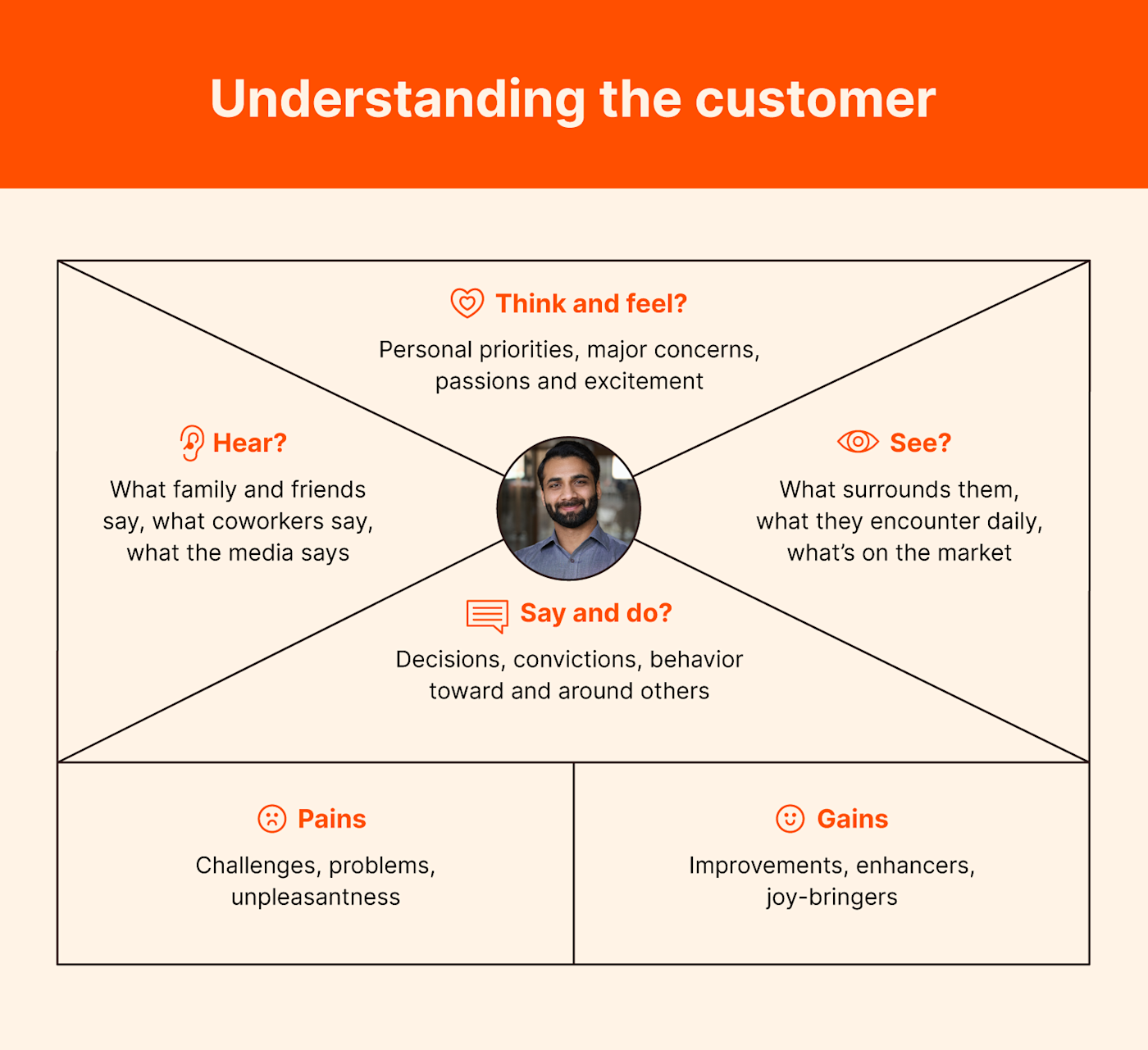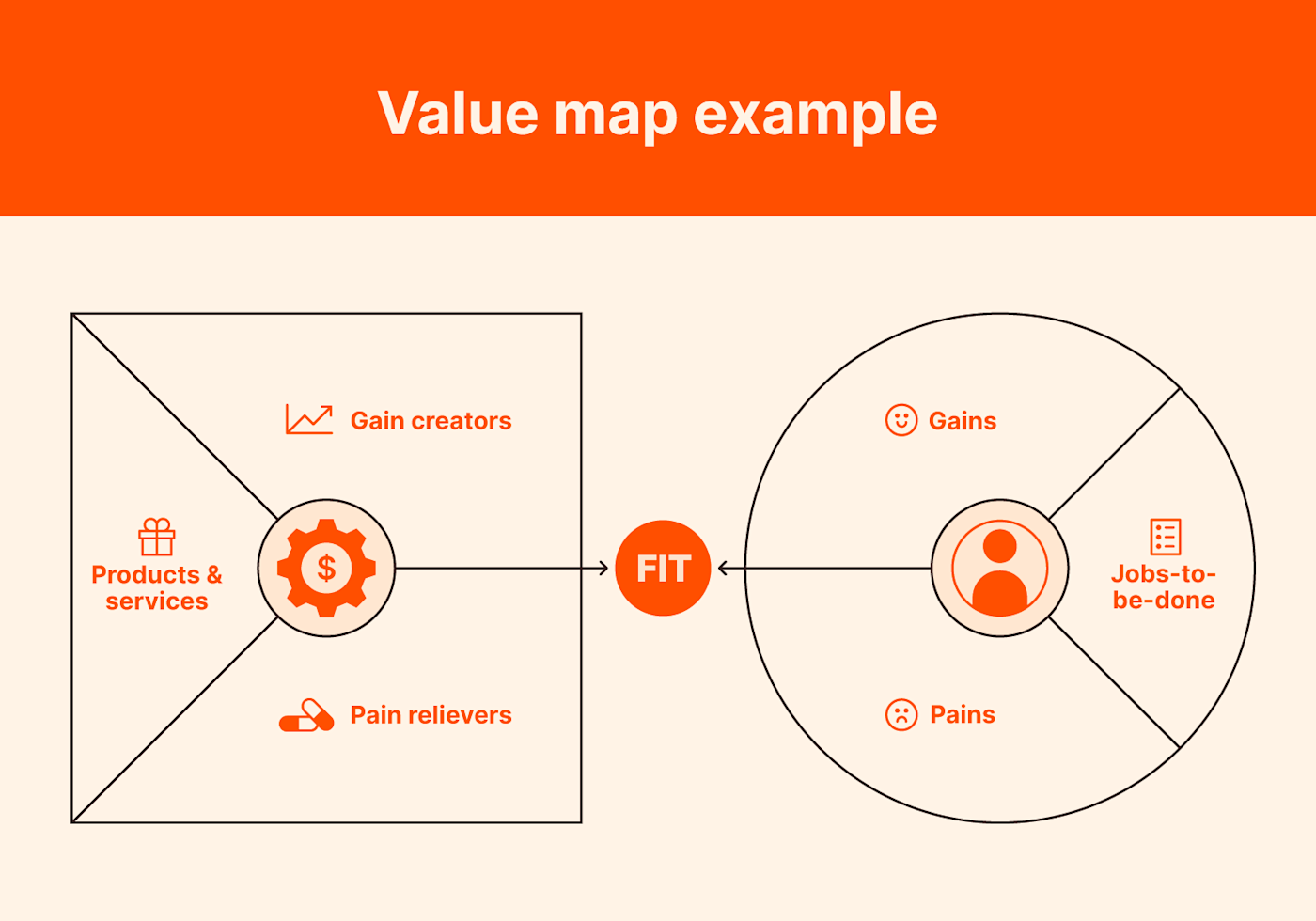If you’ve ever seen an early 2000s infomercial, you’ve seen the marketing of pains and gains in action.
Today, advertisers generally assume that the majority of people don’t need things like a non-stick pan or a giant cupcake explained to them. But at the turn of the century, commercials didn’t leave a single thing to the imagination. They explained everything about everything, in great detail and at even greater volume.
Grow your business with marketing automation
While these commercials look patently ridiculous to us today, they’re also great examples of pains and gains in marketing. Each commercial began by asking viewers if they had ever experienced some sort of problem or lackluster experience, then presented its product as the solution. Hate picking up your dog’s poop? Try the PooTrap. Love salad but hate making it? The Slap Chop is for you. No matter what the industry, each infomercial started the same way, with an explicit description of the problem—and what value the product was designed to bring.
Even if it’s no longer en vogue to literally shout your product pitch directly at your customers, the concept of pains and gains is still a powerful tool used by product developers and marketers. Here, we’ll discuss what pains and gains are, how to identify them, and how to apply them effectively to create and sell your product.
What are pains and gains?
Every business has two types of customers:
-
Those who are drawn in by the promise of gains (products that will improve or enhance an aspect of their lives).
-
Those who come to the table with pains (problems or obstacles that they need solved by a product or service).
The products that provide these improvements or solutions can be thought of as “gain creators” and “pain relievers.”
A non-stick pan is a pain reliever, designed to address the problem of, and I quote, “the nightmare of your sticky pans!” Though the makers of the Big Top Cupcake would tell you their product was also designed to alleviate the pain of “looking like a fool when your cakes aren’t cool,” an enormous cupcake is pretty obviously a gain creator—it takes something that’s already good and makes it even better.
How pains and gains inform the value proposition statement
The purpose of the value proposition statement is to summarize exactly how your product benefits your customer. In other words, it’s a short explanation of what pain and/or gain the product addresses and how that provides value to the customer.
Don’t phone it in on writing your value statement. A vague proposition statement will lead to uninspiring investor pitches, poorly targeted marketing, and in some cases, the failure of the product completely. But with the help of some quality pains and gains research, you can craft a value statement that resonates with your targets and helps your product and promotional material resonate, too.
How to find your customers’ pains and gains
So how do you actually identify your customers’ pains and gains? You need to put yourself in their shoes. Spend some time with your target demographic; if you already have a customer base, collect data with surveys and tap your customer-facing team for information about your audience’s biggest problems, complaints, compliments, and favorite features.
Ask yourself what your customer:
-
Thinks and feels: What do they care about? What worries them? What excites them?
-
Sees: What is their environment like? What do they encounter regularly?
-
Hears: What do their friends say? What media messaging do they consume? Whose opinions do they value?
-
Says and does: What opinions do they share with others? How do they behave?
After you have a good amount of information on your customer, you can create a version of an empathy map that’s specifically tailored to finding pains and gains.

Record what you learn about your customer in the four upper quadrants of the empathy map. You can pair this map with your ideal customer profile, which should contain more concrete information about your target customer—their age, location, occupation, household size, education level, and so on. The details from your ICP can provide valuable insights for your empathy map as well; for example, your customer’s occupation probably influences what they see day-to-day and the types of people they listen to most.
When the top half of your empathy map is complete, step back and consider your customer as a whole. Ask yourself:
-
If you were this person, what would your pains and gains be?
-
What are the most annoying things this person encounters regularly?
-
What are this person’s joys and priorities? What could make those things even better, or make it easier for this person to enjoy them more?
-
Are there any conflicts between quadrants that might lead to problems? Does what this person thinks conflict with what they do? Does this person see or hear things that clash with their convictions?
Matching products to pains and gains
Knowing what your customers’ pains and gains are won’t do much unless you know how to turn that knowledge into useful information. There are two roles that benefit most from understanding pains and gains: product developers and marketers.
For both of these roles, the goal is to be able to articulate how something alleviates a customer pain or provides a customer gain. From a product perspective, this knowledge is applied to the development of new products or the addition of updated features to existing products. Once those products are created, marketers need to understand how the product addresses customer pains and/or gains so that they can create promotional material that clearly and convincingly states how the product will provide the customers that value.
Using pains and gains to find product fit
When a product is well-designed to address a customer’s pains and/or gains, this is called a “fit.” In order to find a good product fit, you need to make sure of two things:
-
You have an accurate understanding of your customers’ pains and gains.
-
You have a product that effectively addresses those customer demands.
Of course, simply addressing any pain or gain isn’t enough to put your product on the path to success, since not all pains and gains are worth spending money to solve.
For example, although the Snuggie performed well for a while as a novelty product, most people aren’t so dissatisfied with blankets that it’s worth it to them to spend money on what is essentially a backward bathrobe. (That said, Snuggie is still in business, so clearly they still have a target market. But when you Google “Snuggie,” one of the first search suggestions is, “Is Snuggie still a thing?” so the product definitely doesn’t enjoy the same popularity it once had.)
One of the surest ways to make sure you’re targeting a compelling pain and/or gain is to consider your target customers’ jobs-to-be-done.
What are customer jobs-to-be-done?
Much like a non-stick pan or a giant cupcake, customer jobs-to-be-done are fairly self-explanatory: they’re the things the customer needs to do.
To be clear, we’re not talking about the customer’s occupation here; we’re thinking about the customer’s to-do list. (The main reason that customer jobs-to-be-done is written out with hyphens in this way is to differentiate between what we’re talking about and the actual career jobs the customer holds.)
In the same way that different customer demographics will have different pains and gains, jobs-to-be-done also vary depending on who you’re targeting. For example, if you’re marketing a desktop computer:
-
Office equipment managers’ jobs-to-be-done include obtaining equipment for new employees and maintaining things in good condition.
-
A full-time work-from-home employee’s jobs-to-be-done include the tasks associated with their occupation and any household jobs they might use a computer to accomplish.
-
A college student’s jobs-to-be-done include research, writing, note-taking, and printing assignments.
-
A gamer’s jobs-to-be-done include high-bandwidth downloading, running programs that require a lot of memory, live streaming, and video and audio recording.
Using jobs-to-be-done to find product fit
By considering jobs-to-be-done along with your customers’ pains and gains, you can get a better understanding of which problems they prioritize solving or which experiences they’re most interested in enhancing. When you’re choosing pains and gains to target, the closer each pain/gain is to the customer’s jobs-to-be-done, the more compelled they will be to see your product’s value.
Let’s use the desktop computer again as an example. If you’re targeting desktop users as a whole, you might target common pains like slow processing speeds, poor connectivity, and clunky user interfaces. But if you look at your audience’s jobs-to-be-done, you’ll be able to get more specific with different marketing materials—slow processing speeds are an even bigger problem for gamers than for college students, while an office manager might not be as concerned with remote audio/video as a work-from-home employee would be.
Match customer needs with product benefits using a value map
When it comes time to put all of these various elements together, the best way to do so is with a value map. A value map combines customer pains, gains, and jobs to be done with a product’s capacity to provide pain relief and gain creation.

-
On the right side of the value map, you’ll transfer the information from your empathy map to the corresponding gains, pains, and jobs-to-be-done sections.
-
In the top and bottom sections of the left side, you’ll write down things that could create or increase these gains and things that could alleviate these pains.
-
With all of this information recorded, you can now consider what products and services will most effectively provide as many of these gain creators and pain relievers as possible. That goes in the left-most section.
On the marketing side, you’ll fill out this information the same way, but in your case, the product or service will have already been created. Instead of coming up with a product to address these customer needs, your job is to come up with ways to show potential customers what a good fit your product is by demonstrating how its benefits correspond to their needs.
Keeping customer info up to date
Pains and gains aren’t something you identify once and then stick with forever. Customers’ wants and needs are always changing, and brands that aren’t working with consistently updated customer data run the risk of investing a lot of time and energy into a product that addresses issues their customers no longer have.
That’s why it’s important to create systems that can capture and organize customer information on a constant basis. To get some ideas on how to simplify your data collection process, take a look at how a real estate company keeps up with customers in one of the most quickly-evolving industries there is. And here are some other tips on automating data collection:
[adsanity_group align=’alignnone’ num_ads=1 num_columns=1 group_ids=’15192′]
Need Any Technology Assistance? Call Pursho @ 0731-6725516




